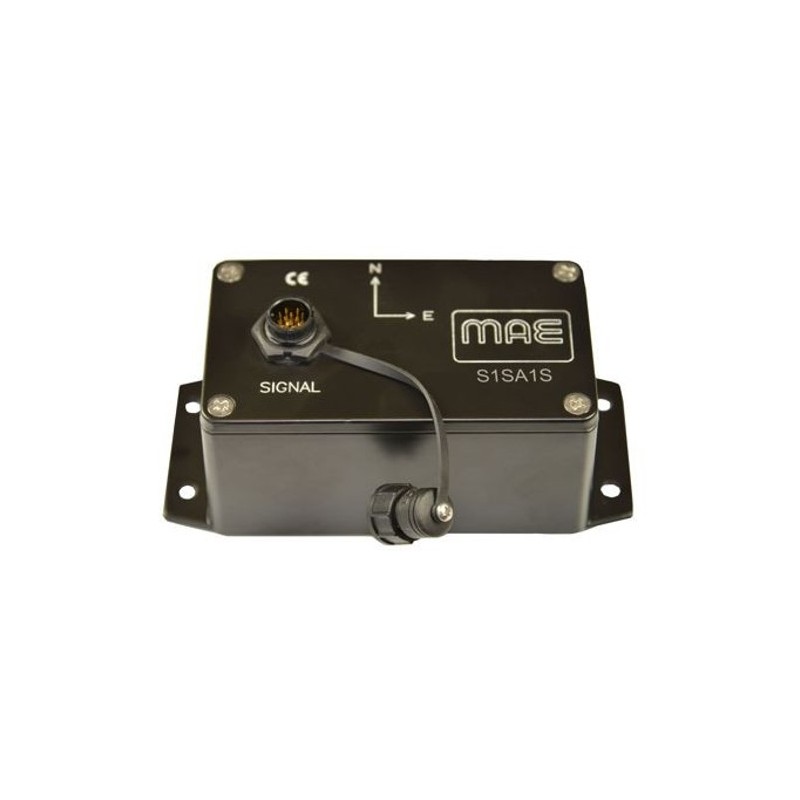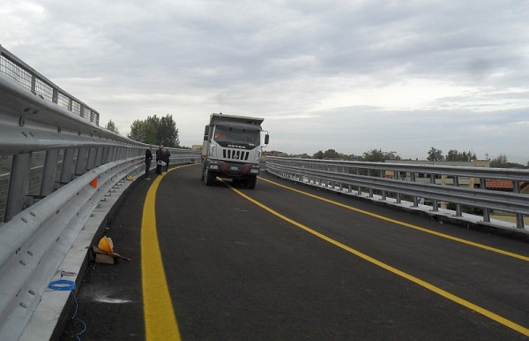
Reference: VH400-2M
Brand: VEGETRONIX

Reference: VH400-2M
Brand: VEGETRONIX
Reference: STC-24
Brand: Meatrol
Reference: 10HS ECHO - 5Mts
Reference: BASE-U-4
Reference: UA-002-64
Brand: ONSET



Description
Single component accelerometer sensor for structural and environmental seismic monitoring, accuracy of 1 V/g, housed in an aluminum IP-67 protection rate case with embedded fixing flaps; ideal for installation in hard environments, it is supplied with IP-67 12 male Amphenol connector with protective cap and orange polish PUR cable. Aluminum mounting bracket is supplied together with sensor, in order to allow installation both on horizontal and vertical surfaces.
TECHNICAL SPECIFICATIONS
Methodologies
Dynamic surveys on structures
One of the key issues related to the stability and durability of modern buildings and such infrastructural works as masterpieces or places of historical interest, is represented by the assessment of the response to dynamic stresses they may be subjected to in the course of their lives as a result of those phenomena that can be continuous or constant over the time (such as the effect of the vehicular traffic, the wind on a bridge or the seismic events). In these cases it is necessary to accurately measure both speeds and accelerations that the structures can hold up without any significant damage. In order to measure the movements produced by dynamic stresses, it is necessary to use real-time sensors, because speed and frequency of the movements are so high to require data acquisition architectures usually made up of accelerometers with characteristics that vary depending on the investigated object and connected to high resolution acquisition systems.

Below the main targets of the dynamic surveys on structures:
Seismic vibration monitoring
The survey methodologies based on passive seismic may be of "on time" type, where the instrument performs a constant recording of the signals coming from the sensor connected to it, or of "trigger" type.
TRIGGER BASED SEISMIC MONITORING
The seismic vibrations monitoring called "trigger", or threshold, is one of the methodologies the non-destructive testing (CND) surveys are made up of and it is widely used within structural monitoring and dynamic surveys on the structures. In the trigger acquisitions such "stand alone" seismographs are used; these are specifically designed for the continuous seismic monitoring, where even if they are constantly listening, they are ready to start recording as soon as an event exceeding the trigger threshold (time 0 , start of recording) set in the instrument at the programming time. The sensors used are usually the tri-axial low frequency 1, 2 Hz type. The use of trigger seismic vibrations allows:

TIME BASED SEISMIC MONITORING
This technique is used to obtain information concerning possible dynamic amplification effects of seismic waves in "emersion". It is based on the recording of the background noise in the time domain and following elaboration of the signal’s frequencies in the domain. It is carried out by placing a tridimensional geophone on the ground with low frequency response and by recording the seismic noise in different temporal windows. Later on, the study of the spectrums obtained from the convolution of the frequency of the signal recorded in the domain for the three components of the ground motion and the application of techniques on spectrum analysis, allows to define and measure possible local seismic amplifications and the seismic frequency of the site. The measurements of the microearthquake can also be taken in linear “arrays” for the localization of faults.
Seismic monitoring is carried out in areas subject to risks related to a seismogenic activity, by acquiring the seisms with time and recording the seismograms. Seismic stations are used able to record in threshold or continuous type, and low frequency geophones or seismic accelerometers. The recording in the long period, of the earthquakes relative to a site or fairly large area allows to configure the seismic scenario of an area and evaluate the risk and vulnerability conditions. If the monitoring activity is supported by specific knowledge of geological and geo-technicaltype, we are talking about seismic Micro-zoning.
Your review appreciation cannot be sent
Report comment
Report sent
Your report cannot be sent
Write your review
Review sent
Your review cannot be sent
Reference: PX3PXN01S
Brand: VERIS
Reference: U0246
Brand: COMET
Reference: RK520-04
Brand: RIKA SENSORS
Reference: PX3PLX01S
Brand: VERIS
Reference: KLT/A
Brand: FUEHLER SYSTEME
Reference: RK300-03B
Brand: RIKA SENSORS
Reference: MYJ-WDS300
Brand: MYJ Sensores
Reference: RKL-01
Brand: RIKA SENSORS
Reference: HF03-LI19
Brand: Hukseflux
Reference: DV-DENDRO
Brand: ECOMATIK
Reference: P3110E
Brand: COMET
Reference: MYJ-MWDS08
Brand: MYJ Sensores
Reference: MYJ-WDS308
Brand: MYJ Sensores
Reference: W0846
Brand: MYJ Sensores
Reference: MYJ- WES300
Brand: MYJ Sensores
Reference: W3710
Brand: COMET

Description
Single component accelerometer sensor for structural and environmental seismic monitoring, accuracy of 1 V/g, housed in an aluminum IP-67 protection rate case with embedded fixing flaps; ideal for installation in hard environments, it is supplied with IP-67 12 male Amphenol connector with protective cap and orange polish PUR cable. Aluminum mounting bracket is supplied together with sensor, in order to allow installation both on horizontal and vertical surfaces.
TECHNICAL SPECIFICATIONS
check_circle
check_circle